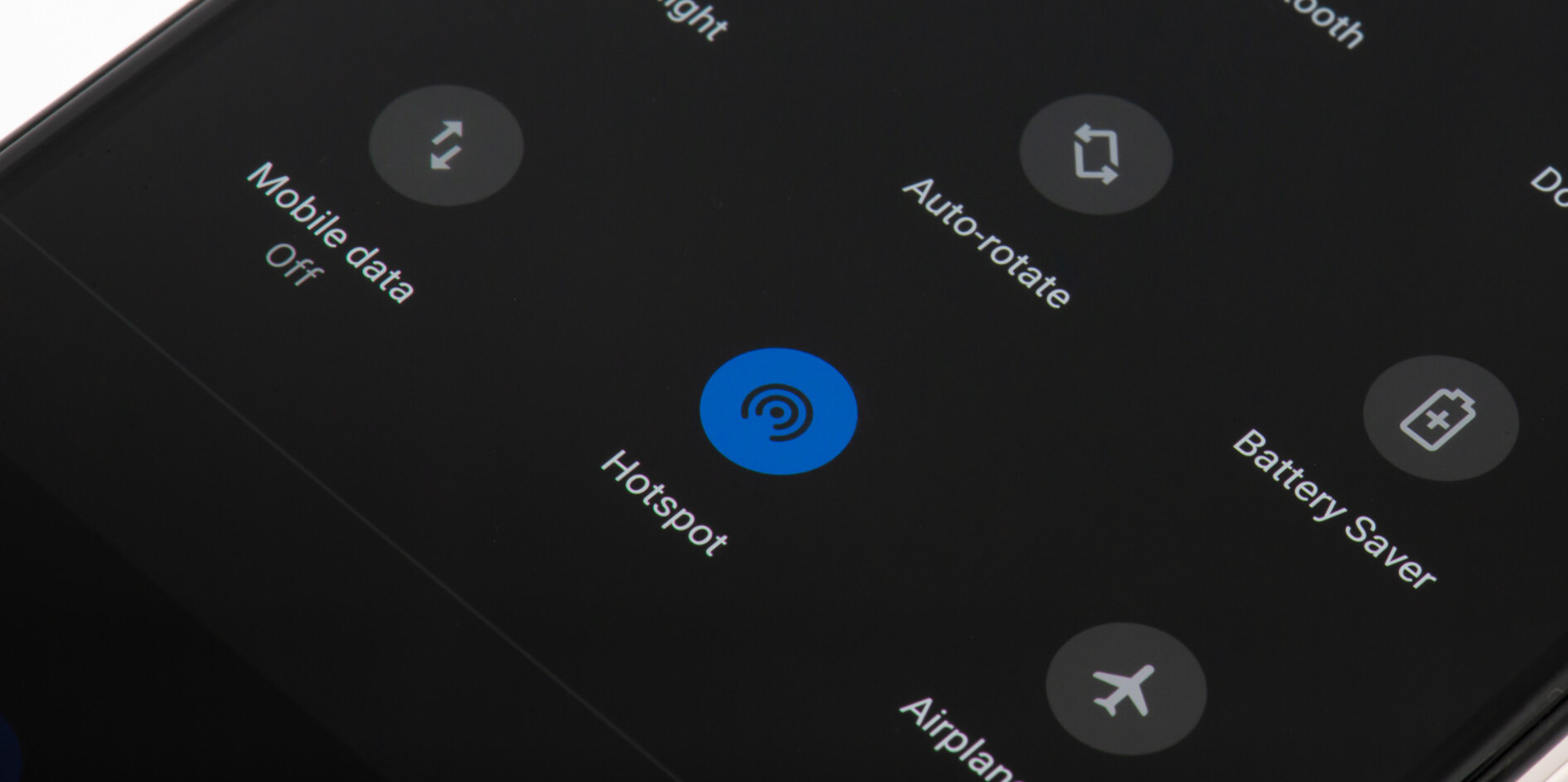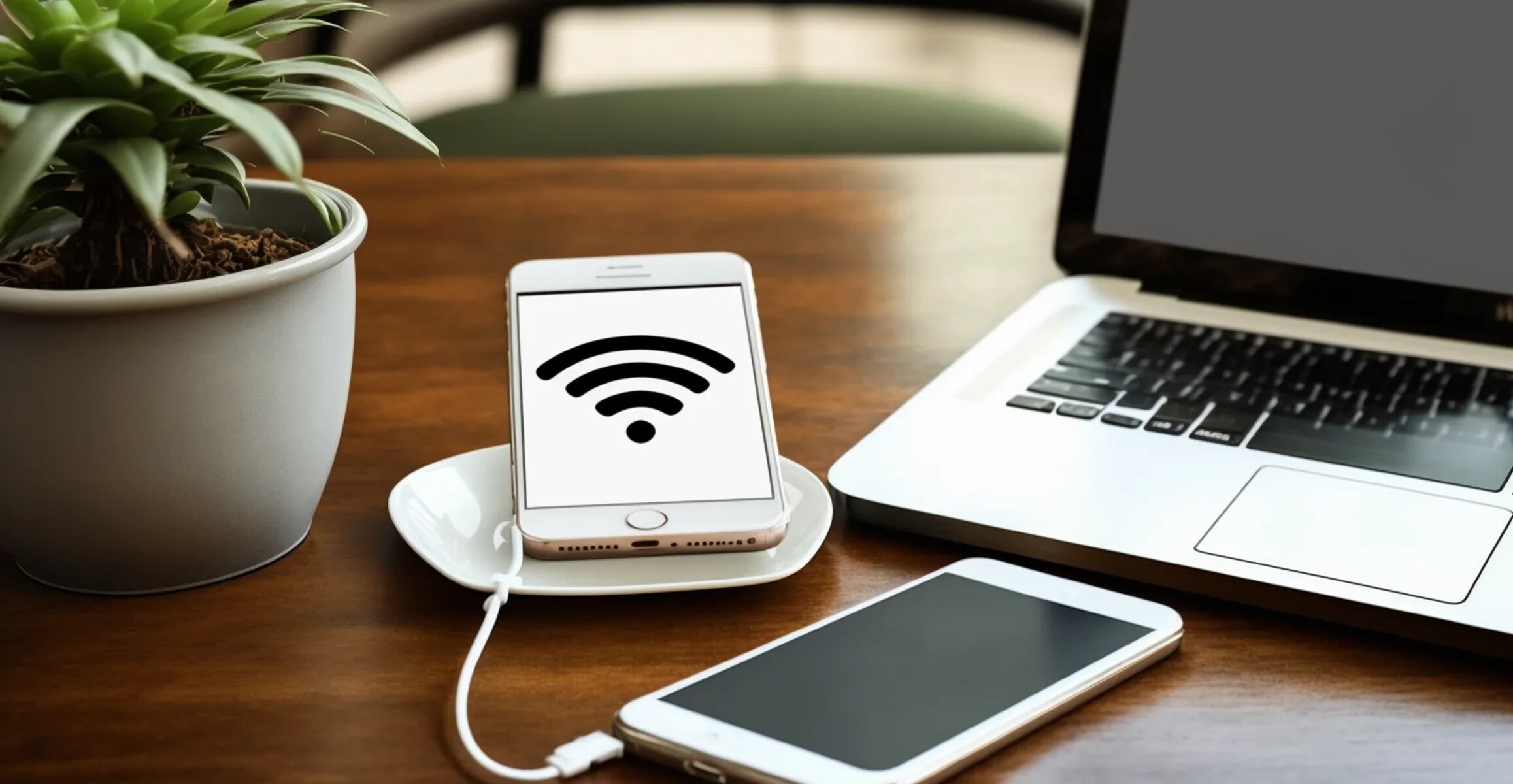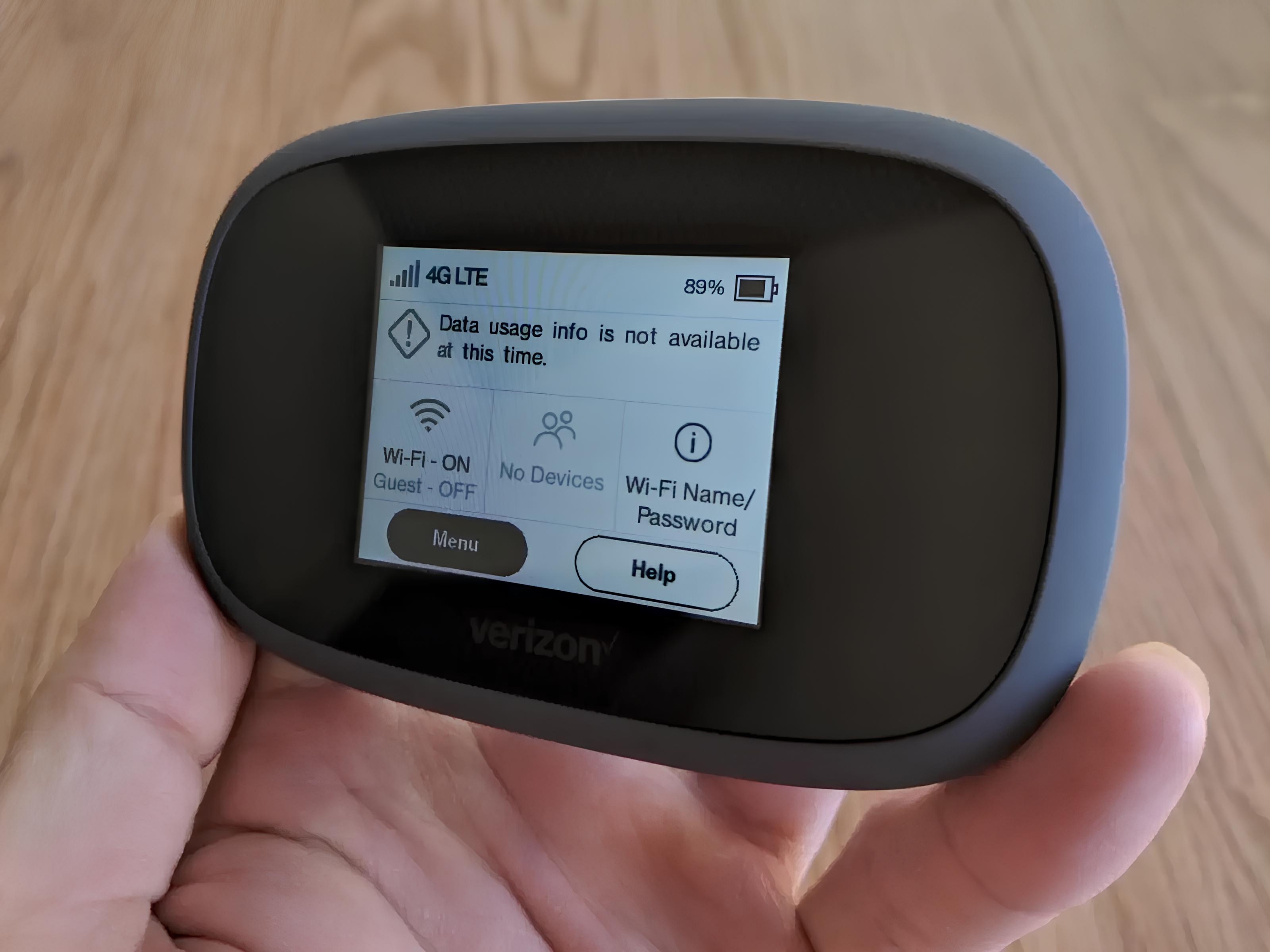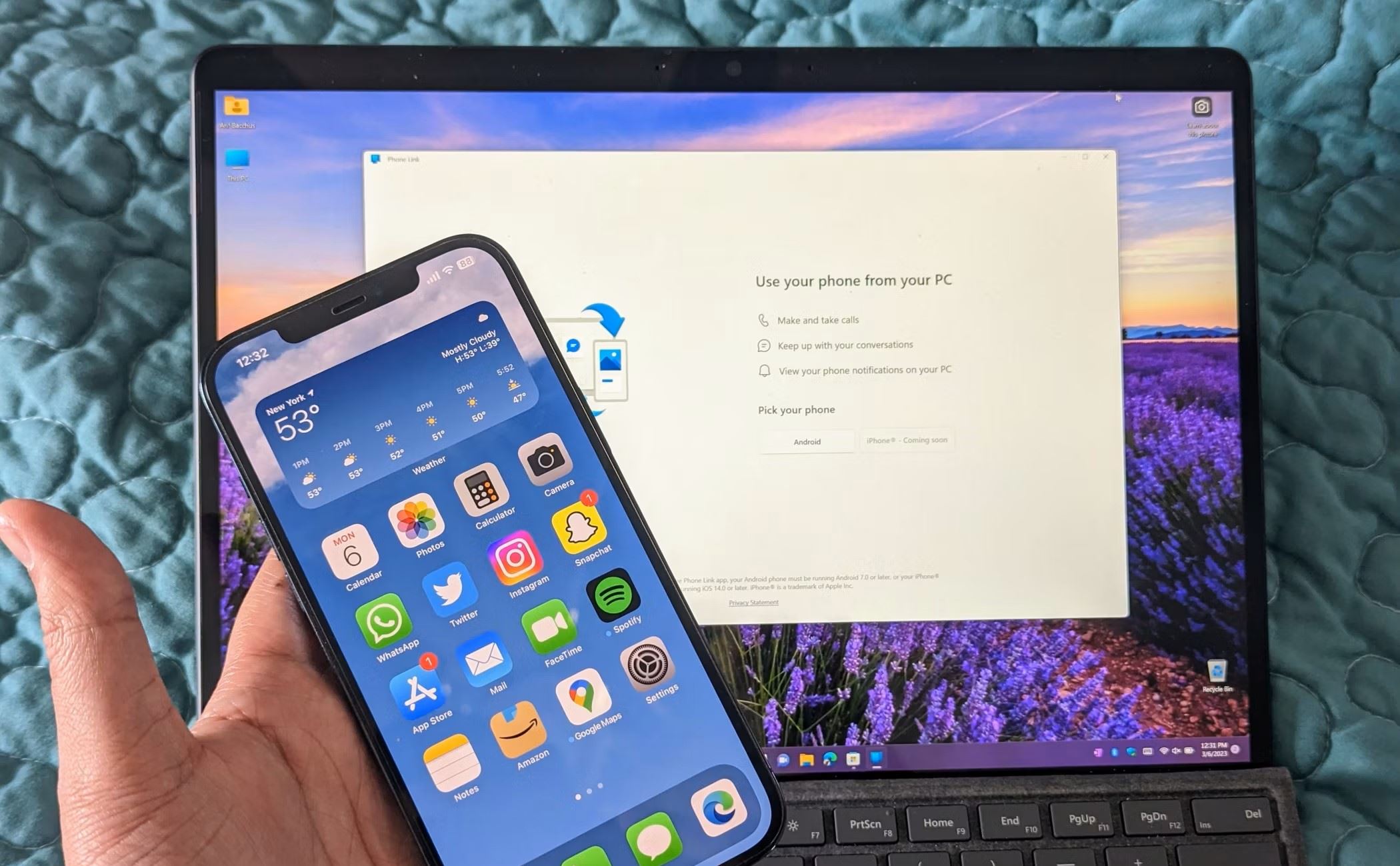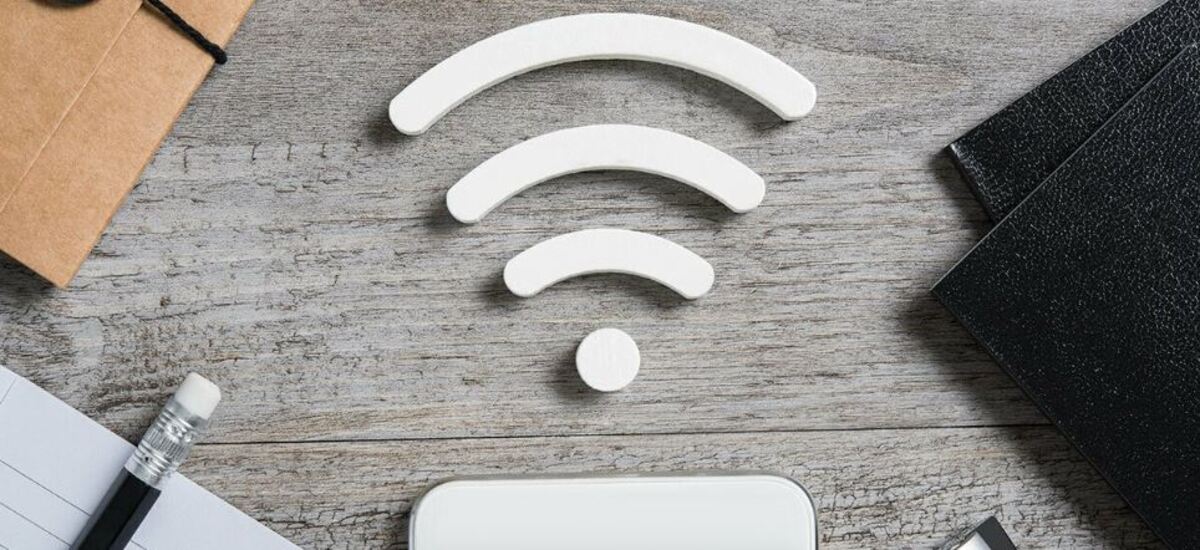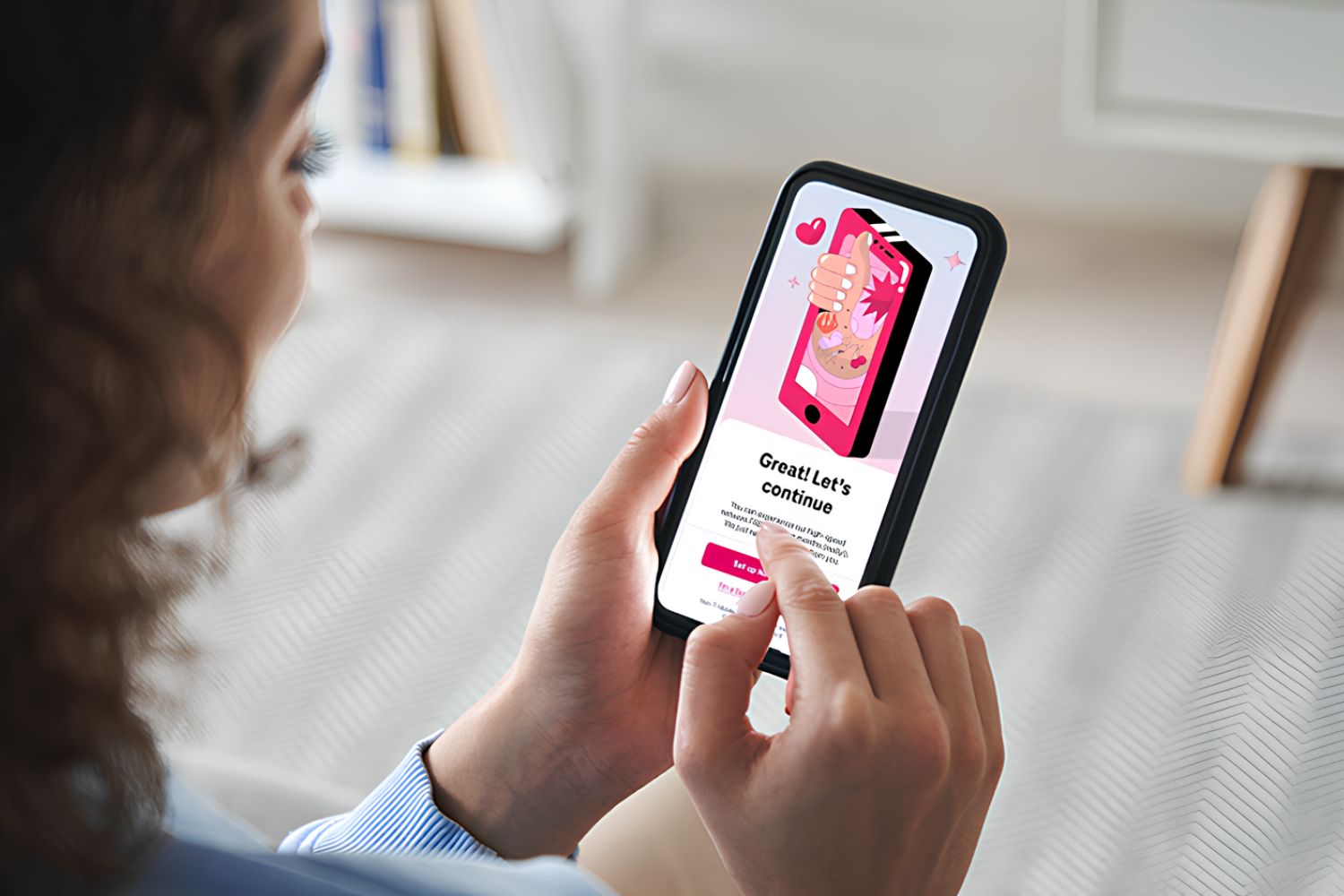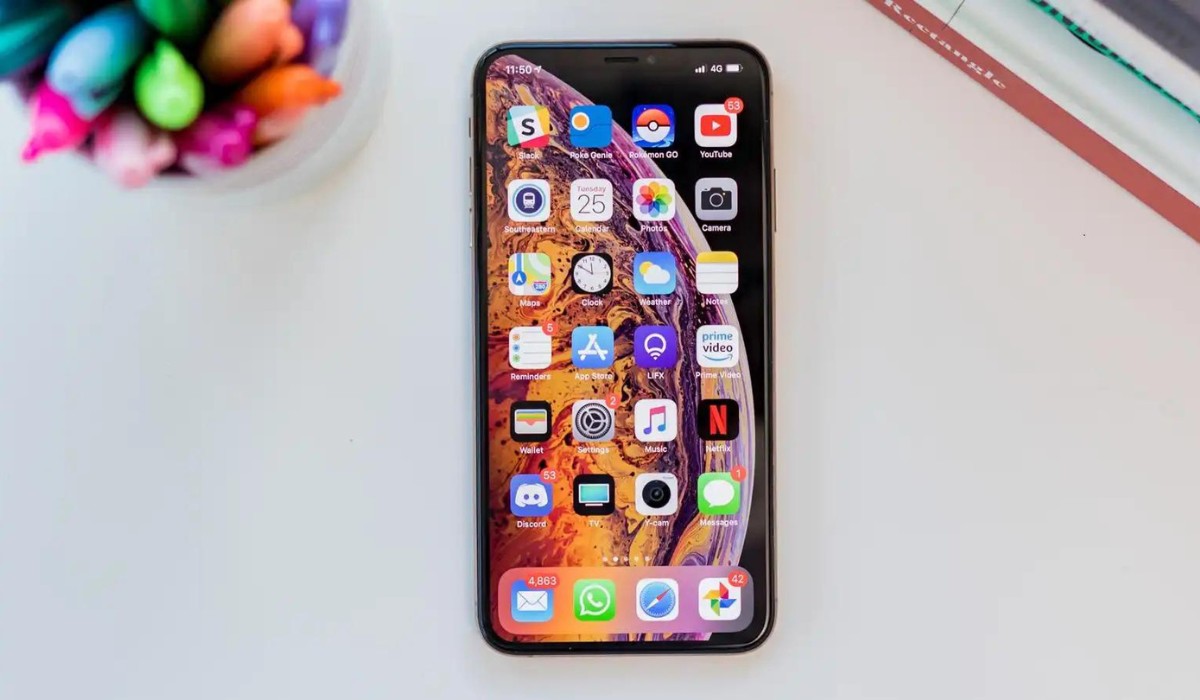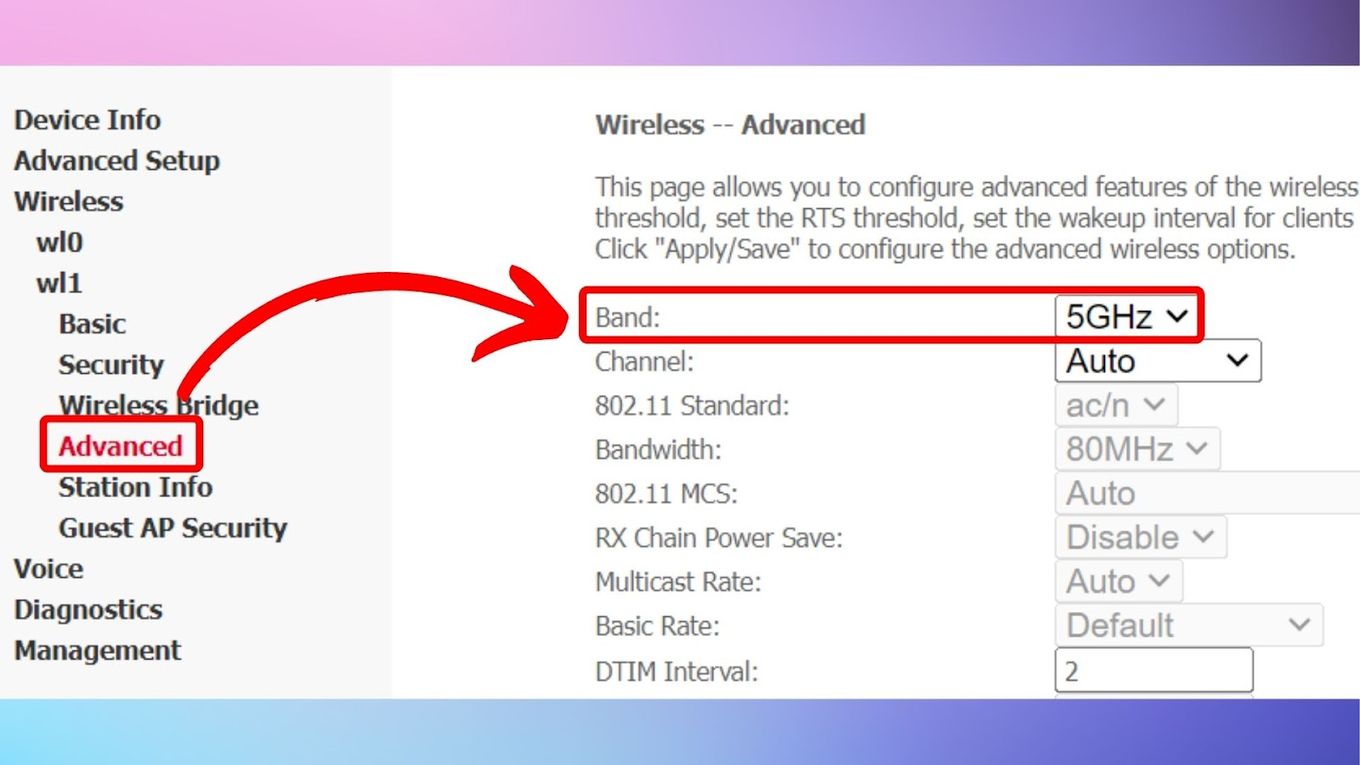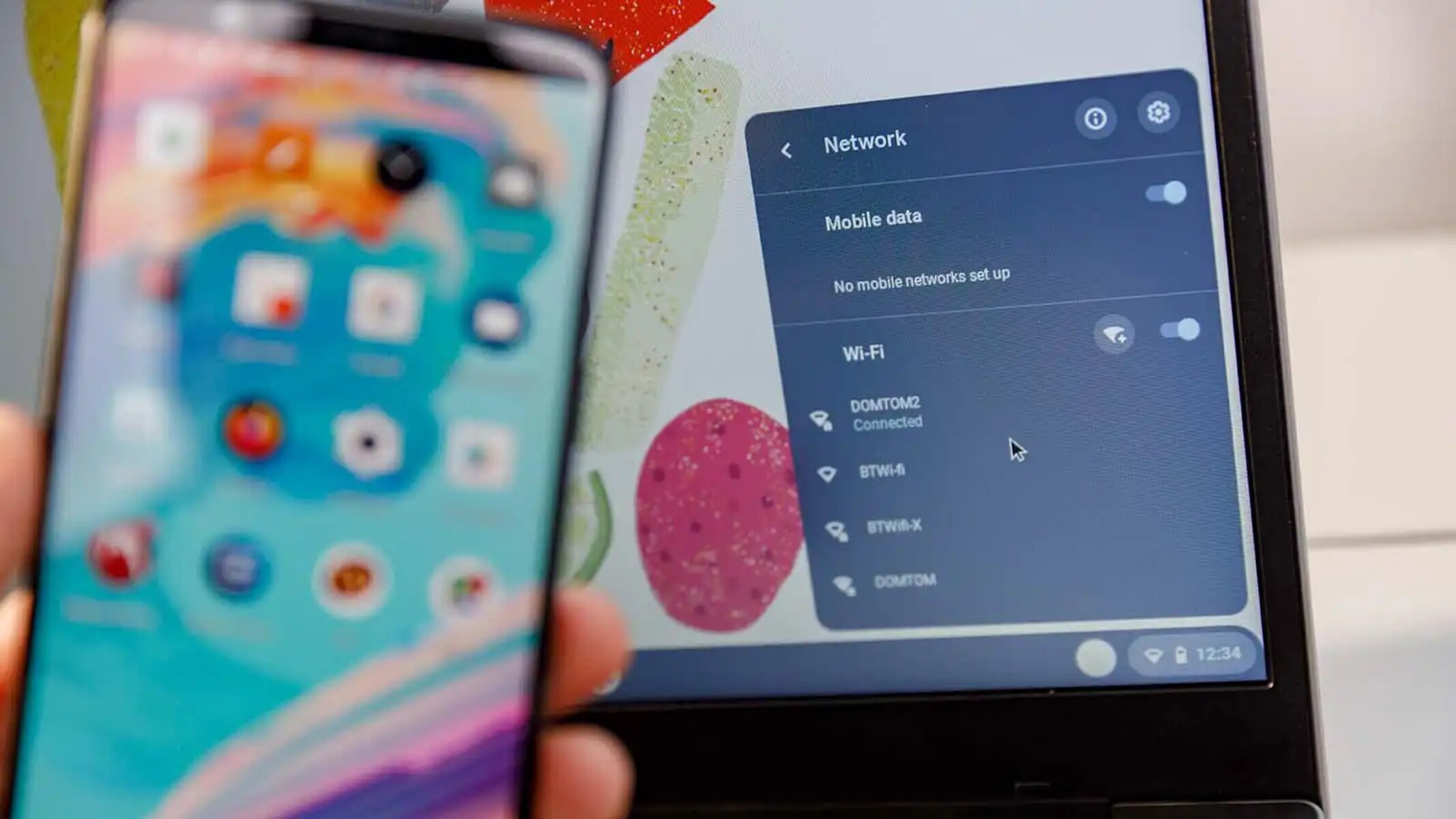What is a Personal Hotspot?
A personal hotspot is a feature available on most smartphones that allows you to share your cellular data connection with other devices, such as laptops, tablets, or other smartphones. Essentially, it turns your phone into a portable Wi-Fi hotspot, providing internet access to nearby devices without the need for a traditional Wi-Fi network.
When you activate the personal hotspot feature on your phone, it creates a small, localized Wi-Fi network that other devices can connect to. This enables them to access the internet using the cellular data connection of your phone. It's a convenient way to stay connected when traditional Wi-Fi networks are unavailable, or when you need to provide internet access to multiple devices while on the go.
Personal hotspots are particularly useful when traveling, as they allow you to access the internet on your laptop or tablet even in areas where public Wi-Fi networks may be limited or insecure. Additionally, they can be handy in emergency situations or when you need to quickly set up a temporary internet connection for a group of people.
The personal hotspot feature is a valuable tool for maintaining productivity and staying connected in various scenarios, making it a versatile and essential function for many smartphone users. With the increasing reliance on digital connectivity in today's world, the ability to create a personal hotspot provides a convenient solution for accessing the internet on multiple devices, regardless of location.
How Does a Personal Hotspot Work?
A personal hotspot works by utilizing the cellular data connection of your smartphone to create a localized Wi-Fi network that other devices can connect to for internet access. When you activate the personal hotspot feature on your phone, it essentially transforms your device into a mobile Wi-Fi router, allowing you to share your cellular data with other devices, such as laptops, tablets, or other smartphones.
Behind the scenes, your smartphone acts as a modem, receiving data from your mobile carrier's network and then transmitting it via Wi-Fi to enable other devices to access the internet. This process involves the conversion of the cellular signal into a Wi-Fi signal that can be detected and utilized by nearby devices. It's important to note that the availability and speed of the personal hotspot feature depend on your mobile carrier's network coverage and the strength of the cellular signal in your location.
When another device connects to your personal hotspot, it essentially establishes a secure and private connection to your phone, allowing it to access the internet using the cellular data from your mobile carrier. This means that the connected device can browse the web, stream media, send emails, and use other internet-dependent applications as if it were connected to a traditional Wi-Fi network.
In addition to providing internet access, the personal hotspot feature also includes built-in security measures to protect the connection and ensure the privacy of the data being transmitted. This helps safeguard against unauthorized access and potential security threats, providing a safe and reliable means of sharing your cellular data with other devices.
Overall, the personal hotspot feature offers a seamless and convenient way to extend internet connectivity to multiple devices, making it an invaluable tool for staying connected and productive in various situations. Whether you need to access the internet on your laptop while traveling, share internet access with a group of colleagues, or establish a temporary Wi-Fi network in a remote location, the personal hotspot feature empowers you to create a reliable and secure internet connection using your smartphone's cellular data.
Setting Up a Personal Hotspot on Your Phone
Setting up a personal hotspot on your phone is a straightforward process that allows you to quickly share your cellular data connection with other devices. The steps to enable this feature may vary slightly depending on the make and model of your smartphone, but the general process remains consistent across most devices.
-
Accessing the Settings: Begin by unlocking your phone and accessing the settings menu. On most smartphones, the personal hotspot feature can be found within the "Network & Internet" or "Connections" section of the settings.
-
Enabling the Personal Hotspot: Within the settings menu, locate and select the option for "Personal Hotspot" or "Tethering & Portable Hotspot." This will allow you to activate the personal hotspot feature on your phone.
-
Configuring Hotspot Settings: Once the personal hotspot feature is enabled, you may have the option to configure additional settings, such as setting a custom network name (SSID) and password for the hotspot. This can help personalize the hotspot and enhance its security.
-
Connecting Devices: After configuring the hotspot settings, other devices can connect to the hotspot by locating the network name (SSID) in their Wi-Fi settings and entering the provided password. Once connected, these devices will be able to access the internet using your phone's cellular data connection.
-
Monitoring and Managing Connections: As the hotspot owner, you can monitor the devices connected to your hotspot and manage their access through your phone's settings. This may include the ability to restrict certain devices from accessing the hotspot or adjusting the network settings as needed.
It's important to note that enabling the personal hotspot feature may consume additional data from your cellular plan, so it's advisable to be mindful of your data usage while the hotspot is active. Additionally, some mobile carriers may impose limitations or require a specific data plan to use the personal hotspot feature, so it's recommended to check with your carrier for any applicable restrictions or charges.
By following these steps, you can easily set up a personal hotspot on your phone, providing a convenient way to share your cellular data connection with other devices and stay connected while on the go. Whether you need internet access for work, entertainment, or communication, the personal hotspot feature empowers you to extend the capabilities of your smartphone and create a portable Wi-Fi network wherever you are.
Using a Personal Hotspot for Internet Access
Utilizing a personal hotspot for internet access offers a myriad of benefits, enabling seamless connectivity for various devices in diverse settings. Whether you're working remotely, traveling, or simply in need of a reliable internet connection, leveraging the personal hotspot feature on your smartphone can significantly enhance your digital experience.
Remote Work and Productivity
For individuals working remotely or on-the-go, a personal hotspot serves as a lifeline for maintaining productivity. With a stable internet connection provided by the hotspot, professionals can access work-related resources, participate in virtual meetings, and collaborate with colleagues from virtually anywhere. This flexibility is particularly valuable for freelancers, entrepreneurs, and employees who require consistent connectivity outside of traditional office environments.
Travel and Exploration
When traveling, especially in areas with limited or unreliable public Wi-Fi networks, a personal hotspot becomes an indispensable tool. Whether navigating through unfamiliar territories, researching local attractions, or sharing travel experiences on social media, having a reliable internet connection through the hotspot ensures that travelers can stay connected and informed throughout their journeys.
Emergency Situations and Contingency Planning
In emergency situations, such as natural disasters or unexpected network outages, a personal hotspot can provide a vital means of communication and access to essential information. By creating a localized Wi-Fi network, individuals can connect emergency response devices, communicate with authorities, and seek assistance, thereby enhancing safety and resilience during challenging circumstances.
Entertainment and Leisure
Beyond practical applications, the personal hotspot also caters to leisure and entertainment needs. Whether streaming music at a beach gathering, watching movies during outdoor excursions, or gaming with friends in remote locations, the hotspot facilitates enjoyable experiences by enabling internet access for entertainment purposes.
Flexibility and Convenience
The flexibility offered by a personal hotspot extends to diverse scenarios, such as outdoor events, road trips, and temporary workspaces. Its portability and ease of setup make it a convenient solution for creating a Wi-Fi network on demand, without the constraints of traditional fixed-line internet connections.
In essence, leveraging a personal hotspot for internet access empowers individuals to transcend geographical limitations and stay connected in a dynamic, digital world. By harnessing the capabilities of this feature, users can seamlessly integrate internet connectivity into various aspects of their lives, ensuring consistent access to online resources, communication platforms, and entertainment content.
Managing Data Usage on Your Personal Hotspot
Effectively managing data usage on your personal hotspot is crucial for optimizing your internet connectivity, ensuring efficient utilization of your cellular data, and avoiding potential overage charges. By implementing strategic practices and leveraging built-in tools, you can maintain control over your data consumption while making the most of your personal hotspot.
Monitoring Data Consumption
One of the primary steps in managing data usage on your personal hotspot is to monitor the amount of data being utilized by connected devices. Most smartphones offer built-in features that enable users to track data usage, providing insights into the volume of data consumed over a specific period. By regularly reviewing this information, you can gain a comprehensive understanding of your data usage patterns and identify any excessive consumption that may necessitate adjustments.
Setting Data Limits and Alerts
To proactively manage data usage, consider setting data limits and alerts on your smartphone to prevent excessive consumption. Many devices allow users to define data usage thresholds, triggering automatic notifications or data cutoffs when predefined limits are reached. By configuring these safeguards, you can effectively control data usage, receive timely warnings about approaching limits, and prevent unexpected depletion of your cellular data allowance.
Optimizing Connected Devices
Encouraging efficient data usage among connected devices is essential for maximizing the longevity of your cellular data plan. Educate users about responsible data consumption practices, such as minimizing high-bandwidth activities, disabling automatic updates, and prioritizing essential tasks to conserve data. Additionally, consider adjusting the settings on individual devices to optimize their data usage behavior, ensuring that they align with your data management objectives.
Utilizing Data-Saving Features
Many smartphones offer data-saving features that can help minimize data usage without compromising the overall user experience. These features may include data compression for web browsing, adaptive video streaming quality, and background data restrictions for apps. By leveraging these capabilities, you can streamline data usage across connected devices, allowing for efficient utilization of your personal hotspot while preserving data resources.
Periodic Data Usage Reviews
Regularly reviewing and analyzing data usage trends is essential for refining your data management strategies and identifying opportunities for optimization. By conducting periodic assessments of data consumption patterns, you can adapt your approach, implement targeted adjustments, and ensure that your personal hotspot remains an effective and sustainable resource for internet connectivity.
By implementing these proactive measures and embracing a data-conscious approach, you can effectively manage data usage on your personal hotspot, ensuring that it serves as a reliable and efficient tool for extending internet connectivity to multiple devices. Through strategic monitoring, optimization, and responsible usage practices, you can maximize the benefits of your personal hotspot while maintaining control over your cellular data consumption.







